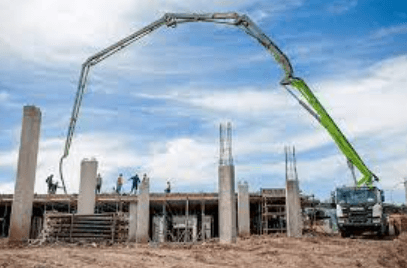Speed is the commodity in world-class building construction, just as much as quality, and in Australia, when major construction is concerned, you need the best possible concrete; however, it only happens if you have the right concrete with pumps.
What is Concrete Pumping?
Concrete pumping is a construction system of placing fresh concrete into a structure as it’s built by transporting it through a system of pipes and hoses where the concrete can reach any site it’s needed.
This method is particularly helpful for tall buildings or for huge slabs that need to be constructed, as well as for areas that present problems to confine the concrete.
The Australian Edge
Australia’s construction industry, and more specifically concrete pumping, has a younger history than its North American and European counterparts but still is a great story of rapid development and adoption of new technologies.
The Early Days
The real development of concrete pumping in Australia came with the arrival of prestressed concrete technology in the 1950s and the realisation that it could be used as a large-scale building material in this country.
The first prestressed concrete structure in Australia was the Ice Tower for Warragamba Dam, completed in 1953. It represented the beginning of a new era in Australian construction. Prestressed concrete was the platform for the future of concrete pumping.
The Growth of Concrete Pumping
The practice of concrete pumping was accepted in Australia by the 1970s. This replacement of industry labour with hydraulic power improved both efficiency and accuracy in placement, especially in challenging locations and complex structures.
In the 1970s, the positive impact of concrete pumpings on costs (labour and time), safety on construction sites and productivity was becoming known to the Australian construction sector.
The New Standard
Following the lead of the construction sector internationally, concrete pumping has become standard practice in Australia’s construction sector due to its many benefits.
Lendlease’s One Sydney Harbour project, for instance, boasted the energy, carbon emissions and cost benefits of using electric concrete pumps, putting the firm ‘on track to achieving zero fossil fuels across construction activities’ with additional sustainability benefits.
Benefits of Concrete Pumping in Australia
- More Work – Concrete pumps allow concrete to travel in a continuous stream with no interruption during placement, allowing more work to be done in a shorter amount of time than when concrete was manually placed.
- Lower Labour Costs – The labour cost is also reduced due to the concrete pumps.
- Increased Quality – Concrete with pumps is homogeneous, with lesser chances of segregation and cold joints.
- Ease of Access – Pumps can be used in places that concrete trucks cannot access, allowing concrete to be placed at heights and across obstacles.
- Safety – Workers no longer need to carry heavy supplies or enter dangerous terrain, lowering their risk of workplace injuries.
Read also: Stop Wasting Money on Paid Marketing: Invest in Affordable SEO for Organic Growth
Case Study
Eco-Pavement – The University of Sydney’s Green Cement Initiative
An Australian ‘eco-pavement’ is a world-first carbon dioxide-rich cement with a greatly reduced carbon footprint, made with waste and industrial by-products.
The Innovation
Fly ash, ground glass, and gaseous carbon dioxide make up the new pavement. The fly ash acts as a replacement for cement, while the crushed glass replaces sand and aggregates.
By using these materials as substitutes for typical concrete construction, the eco-pavement recycles waste that would otherwise end up in landfills and saves energy that would be used in making the concrete.
Environmental Impact
The first successful pour of this green cement has led to substantial environmental savings:
- 752kg of sand was saved from being dredged
- 327kg of carbon dioxide emissions were prevented from entering the atmosphere
- The manufacturers saved the energy equivalent of 1,000 coffees or a car journey of more than 1,800 km
The Process
The carbon dioxide is directly sequestered into the concrete in a stable mineral form when poured. This locks away the greenhouse gases from ever making their contribution to the planet’s warming.
Future Prospects
They plan to add more eco-pavements with different blends to their trial studies soon. The improved environmental performance of the system will become more obvious when scaled up, with the hope of transforming the construction industry in the very near future.
SUMMARY
The pumping power in the Australian construction industry is the best example of it. Pumping concrete has several benefits over manual mixing. Concrete with pumps increases production efficiency and is more cost-effective than human labour. It is also safer to work with concrete pumps, whereas workers who have to carry the buckets of concrete put themselves at risk. As Australia is evolving, the use of concrete pumps in the industry is about to be the norm and we prove it by the fact that construction projects in all of Australia are soon to be improved thanks to concrete pumping.


